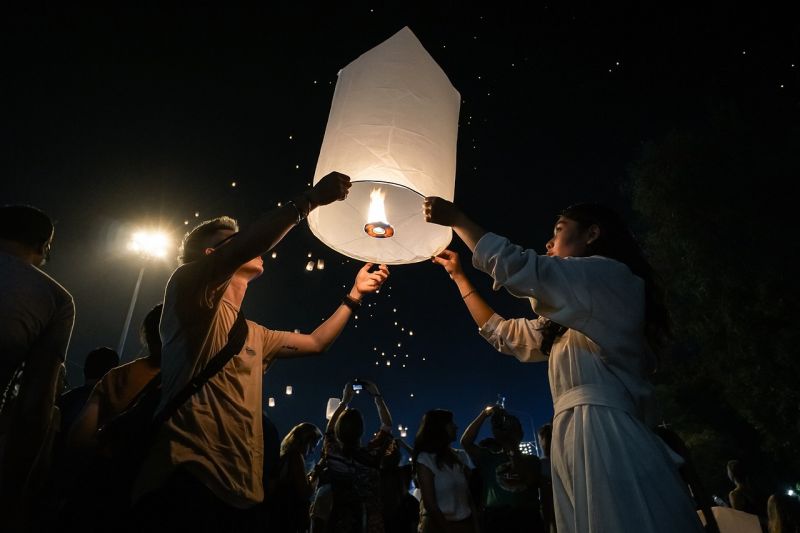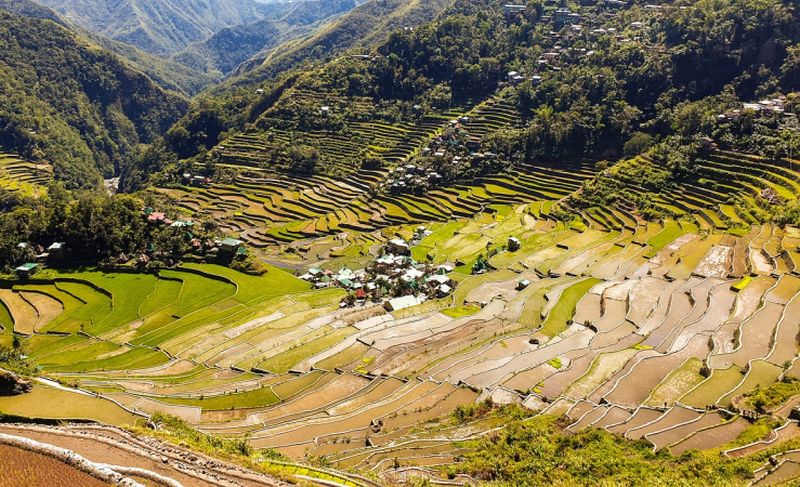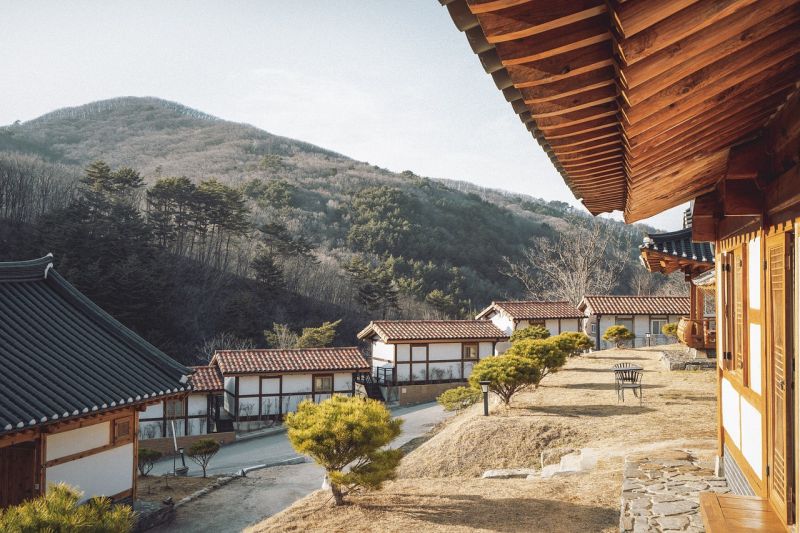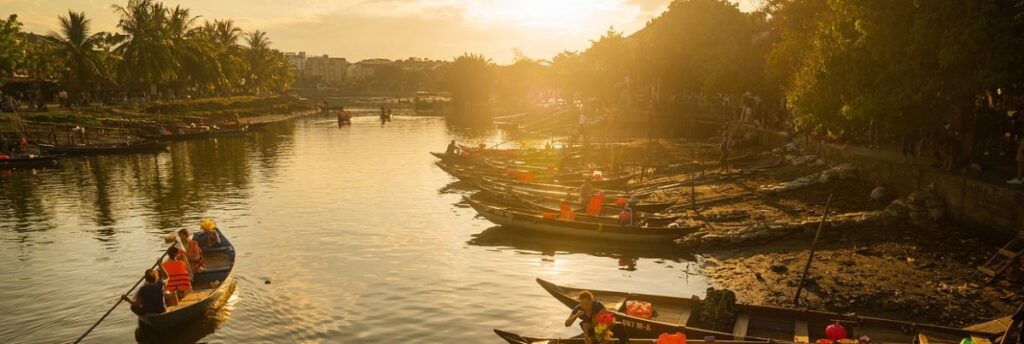Asia, the largest and most diverse continent on Earth, continues to beckon travelers from across the globe with its rich tapestry of cultures, ancient traditions, and breathtaking landscapes. Looking forward to 2024, several destinations within this expansive continent stand out as must-visit hotspots. Let’s delve deeper into some of the most sought-after Asian countries and the reasons why they have captured the hearts of travelers time and again.
#Cultural Escapes in Thailand, the Land of Smiles
Thailand stands out as a quintessential travel destination for 2024, offering a harmonious blend of cultural immersion, culinary delights, and breathtaking natural landscapes. Over the past few years, Thailand has witnessed a remarkable surge in tourism, with millions flocking to experience the vibrant energy of Bangkok and the tranquil beauty of its southern islands. From the bustling markets and ornate temples to the idyllic coastal retreats, Thailand offers a diverse range of experiences that cater to every traveler’s whims.

Here are three destinations to add to your list of Thailand travels in the year to come:
The Grand Palace in Bangkok is a testament to Thailand’s royal heritage and architectural grandeur. Built in 1782, it served as the residence of Thai kings for over 150 years. The intricate detailing of its golden spires, colorful murals, and ornate decorations mesmerizes visitors, offering a glimpse into the opulent lifestyle of Thailand’s monarchs. Within the palace complex lies the sacred Wat Phra Kaew, home to the revered Emerald Buddha, a symbol of Thailand’s spiritual legacy.
The ancient city of Ayutthaya, a UNESCO World Heritage Site, echoes with the remnants of a glorious past. Once the thriving capital of the Kingdom of Siam, Ayutthaya flourished from the 14th to the 18th century, until its downfall in 1767. Today, its weathered ruins, crumbling temples, and towering pagodas evoke a sense of awe and wonder, transporting visitors back in time. Exploring this archaeological marvel unveils the resilience of Thai civilization amidst historical upheavals.
The vibrant floating markets of Damnoen Saduak offer a glimpse into Thailand’s bustling culinary and commercial traditions. Nestled amidst the verdant maze of canals, these markets epitomize the ingenuity of Thai merchants who ply their trade from traditional wooden boats. The lively atmosphere resonates with the aromas of exotic spices, fresh fruits, and sizzling street food, enticing visitors to indulge in a sensory adventure unlike any other.
#Japan: Where Tradition Meets Tomorrow
Japan’s unique fusion of age-old traditions and cutting-edge modernity continues to captivate travelers from around the world. Whether wandering through the neon-lit streets of Tokyo or meditating in the serene gardens of Kyoto, visitors are treated to a journey through time. Japan’s commitment to hospitality, encapsulated in the concept of ‘omotenashi’, ensures that every visitor is welcomed with warmth and sincerity.
With its blend of cultural heritage, technological innovation, and natural beauty, Japan promises an unforgettable adventure for those who seek it, be it winter or summer. Even tho Japan can be tricky to travel, so going with a big all-inclusive agency could be good for your first time. ClubMed has some of the best resorts there and maybe you can look at them for a reference.
When in Japan, venture to Tokyo’s vibrant Asakusa district to explore the iconic Senso-ji Temple, Japan’s oldest Buddhist temple. Witness the bustling atmosphere of Nakamise-dori, a lively street lined with traditional shops selling souvenirs, snacks, and local crafts. Take part in “omikuji,” a traditional fortune-telling ritual, by drawing a random paper fortune and tying it to designated racks for blessings or protection.
Conclude your cultural odyssey with a visit to a sumo stable in Tokyo, where you can witness the rigorous training regimen of sumo wrestlers up close. Gain insights into the centuries-old traditions and strict discipline of Japan’s national sport as you observe the wrestlers’ intense practice sessions and rituals. Engage with the wrestlers and trainers to learn about the history, techniques, and significance of sumo in Japanese society. These immersive experiences offer a glimpse into Japan’s rich cultural heritage and provide memories to cherish for a lifetime.
#Vietnam: A Cultural Mosaic
Vietnam’s rich history and vibrant culture make it an alluring destination for many travelers. From the ancient temples of Hanoi to the bustling streets of Ho Chi Minh City, Vietnam offers a glimpse into its diverse tapestry of traditions and customs. The breathtaking beauty of landmarks like Halong Bay draws countless visitors each year, while the warmth and hospitality of the Vietnamese people leave a lasting impression on all who visit. Whether exploring its historic sites, sampling its delectable cuisine, or simply soaking in its natural wonders, Vietnam offers a wealth of experiences waiting to be discovered.
Hanoi, the vibrant heartbeat of Vietnam, will surprise you while wandering through the labyrinthine streets of the historic Old Quarter. Delve into the city’s rich cultural tapestry as you sample tantalizing street food delicacies, uncover hidden gems in bustling markets, and sip on traditional egg coffee in quaint cafes that exude charm at every corner.
Continue your journey to the charming town of Hoi An, a UNESCO World Heritage Site that enchants visitors with its well-preserved ancient architecture and enchanting lantern-lit streets. Lose yourself in the town’s timeless beauty as you meander through narrow alleyways adorned with colorful lanterns, explore historic landmarks such as the iconic Japanese Covered Bridge, and immerse yourself in the local craftsmanship by perusing artisanal goods in bustling markets.
Philippines: The Archipelagic Gem
The Philippines, with its more than 7,000 islands, is a treasure trove of natural beauty and cultural diversity. Here are three major cultural gems that define the essence of this vibrant nation.
The historic area of Intramuros in Manila stands as a living testament to the Spanish colonial era. Encircled by massive stone walls, this walled city is home to well-preserved Spanish-era buildings, churches, and forts, such as Fort Santiago and San Agustin Church. Exploring its cobbled streets transports visitors to a bygone era, offering insights into the Philippines’ colonial past and the fusion of Spanish and Filipino cultures.
The Banaue Rice Terraces in the Cordillera Mountains are a UNESCO World Heritage Site and a symbol of the indigenous Ifugao people’s ingenuity and connection to the land. Carved into the mountains over 2,000 years ago, these stunning terraces showcase the Ifugao’s sustainable farming practices and deep-rooted cultural traditions. Visitors can trek through the terraces, interact with local communities, and gain a profound appreciation for the harmonious relationship between man and nature.

Definitely look into the colorful MassKara Festival in Bacolod City is a celebration of joy, resilience, and Filipino spirit. Held annually in October, this vibrant festival features street dances, parades, and mask-making competitions, all adorned with elaborate masks and costumes. Beyond the festivities, MassKara embodies the Filipino resilience in the face of adversity, serving as a reminder of the nation’s capacity for hope and happiness amidst challenges.
#India: The Land of Contrasts
India, with its kaleidoscope of cultures, landscapes, and traditions, is a destination like no other. The bustling streets of Delhi and Mumbai pulsate with energy and activity, while the serene temples of Varanasi exude an aura of spirituality that transcends time. Whether it’s marveling at the iconic Taj Mahal, embarking on a wildlife safari in Ranthambore National Park, or savoring the flavors of its rich and diverse cuisine, India promises an unforgettable journey of discovery for travelers seeking adventure, enlightenment, and everything in between.
Here are three lesser known wonders of India you should visit:
India, a land of myriad cultures and traditions, harbors hidden gems beyond its well-known attractions. Here are three lesser-known cultural wonders waiting to be discovered:
Nestled in the Brahmaputra River in the northeastern state of Assam, Majuli is the world’s largest river island and a haven of Assamese culture. Home to numerous Vaishnavite monasteries known as “satras,” Majuli preserves ancient art forms, music, dance, and religious rituals. Visitors can immerse themselves in the serene ambience of these satras, witnessing traditional performances like Sattriya dance and experiencing the simplicity of rural Assamese life.
Next off, our mind wondered to Champaner-Pavagadh Archaeological Park: Located in Gujarat, this UNESCO World Heritage Site encompasses the ruins of an ancient city dating back to the 8th century. The park boasts a unique blend of Hindu and Islamic architectural styles, reflecting the region’s diverse cultural influences over the centuries. Visitors can explore intricately carved temples, mosques, fortifications, and step wells, providing insights into the cultural exchange and historical significance of this lesser-known gem.
If your steps should ever take you to the heart of Tamil Nadu, the Chettinad region is renowned for its distinctive cuisine, palatial mansions, and vibrant cultural heritage. Kanadukathan, a village in Chettinad, is adorned with opulent Chettinad mansions known as “Nattukottai Chettiars,” showcasing exquisite architecture and craftsmanship. These grand residences offer a glimpse into the lavish lifestyle and entrepreneurial spirit of the Chettiar community, while the local cuisine tantalizes the taste buds with its unique blend of spices and flavors.
#South Korea: Where Tradition Meets Innovation
South Korea seamlessly blends its rich cultural heritage with cutting-edge modernity, creating a dynamic and captivating destination for travelers. From the ancient palaces of Seoul to the scenic beauty of Jeju Island, South Korea offers a diverse array of experiences waiting to be explored. Immerse yourself in the vibrant street food scene of Myeongdong, marvel at the futuristic architecture of Incheon, or relax in the soothing waters of a traditional Korean jjimjilbang. With its vibrant festivals, thriving pop culture, and warm hospitality, South Korea invites travelers to embark on a journey of discovery, where the past and the future converge in a harmonious blend of tradition and innovation.
South Korea, renowned for its bustling cities and ancient temples, hides lesser-known cultural treasures waiting to be explored. Here are three such hidden gems:

Hahoe Folk Village in the southeastern province of Gyeongsangbuk-do, Hahoe Folk Village is a UNESCO World Heritage Site that offers a glimpse into traditional Korean rural life. Dating back to the Joseon Dynasty, the village is renowned for its well-preserved thatched-roof houses and winding alleyways. Visitors can experience age-old customs and rituals, such as mask dances performed to ward off evil spirits, and immerse themselves in the tranquil beauty of the surrounding landscape.
Gaya Tumuli Burial Mounds: Located in the city of Gimhae, Gaya Tumuli Burial Mounds are ancient tombs dating back to the Silla Dynasty. These burial mounds, shaped like keyholes, contain the remains of Silla royalty and aristocrats, along with artifacts that shed light on ancient Korean burial practices and societal hierarchy. Visitors can explore the meticulously preserved burial sites and gain insights into the rich cultural heritage of the region.
Yangdong Folk Village: Situated near the city of Gyeongju, Yangdong Folk Village is a hidden gem showcasing the traditional architecture and lifestyle of the Joseon Dynasty. With over 160 traditional houses, many of which have been inhabited by the same families for generations, Yangdong offers a glimpse into Korea’s agrarian past. Visitors can wander through the narrow lanes, visit ancestral halls, and participate in cultural activities such as traditional tea ceremonies and folk performances.
As we navigate through 2024, these countries are poised to maintain their status as amazing cultural travel destinations in Asia. In a world where cultural exchange and understanding are more important than ever, exploring these lesser-known gems invites us to forge connections that transcend borders and boundaries.

